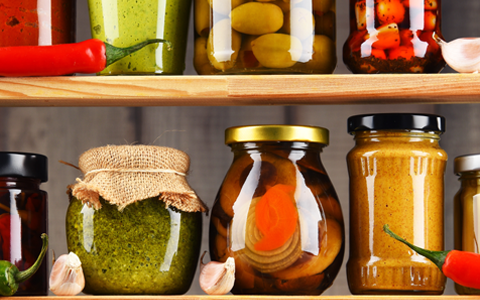The Oldest Methods of Food Preservation
Of course, we haven’t always had supermarkets stocked with shelves and fridges full of long-lasting food. Quite the opposite—foods without preservatives, in their natural state, spoil quickly. Luckily, early humans discovered—often by accident—that food could be preserved for longer using different methods. And what happy accidents those were!
These discoveries had a colossal impact on human development. We transitioned from nomadic cultures, always moving to find seasonal resources, to stable, settled societies—largely thanks to the ability to preserve food. Here’s how our ancestors extended the life of fruits, fish, and meat:
1. Drying (Dehydration)
One of the earliest preservation methods, dating back over 12,000 years in the arid regions of the Middle East and Asia. Drying works by reducing moisture content to the point where microbial and chemical activity halts—no bacteria, no spoilage. Of course, traditional sun-drying requires hot and dry air, not your modern apartment balcony!
2. Cold Storage
They didn’t have fridges in Ancient times, but Emperor Nero still enjoyed a kind of early ice cream—snow mixed with honey and fruit. In cold regions, food was simply kept outdoors in winter. Elsewhere, caves, root cellars, and cold rivers were used. Mountain communities transported snow into deep pits to create primitive refrigerators, especially in Ancient Greece and Rome.
3. Fermentation
Possibly the happiest culinary accident ever: someone left barley seeds in the rain, and they fermented into beer—or grape juice that turned into wine. Alcoholic fermentation transforms sugars into alcohol via opportunistic microorganisms. Similar processes gave us vinegar (acetic fermentation) and yogurt or cheese (lactic fermentation).
Fermentation had four big benefits: it added complex flavors and textures; it increased nutritional value (proteins, amino acids, vitamins); it neutralized antinutrients; and it reduced cooking time—thus saving fuel.
4. Pickling
Preserving food in vinegar and salt. Vinegar is a byproduct of acetic fermentation (from wine, beer, or apple juice). Pickling is faster than fermentation since the acid is already present. Pickled fruits and vegetables were a practical, long-lasting food source for sailors and cold-climate families alike.
Pickling likely began when spoiled wine or beer turned into vinegar—and someone discovered that foods soaked in the sour liquid became delicious and durable. Containers used for pickling were typically made of ceramic or glass, as acidic liquids corrode metal.
5. Salting and Smoking
Salt has been used since antiquity for preservation. As early as 850 BCE, Homer’s contemporaries preserved meat with salt. Salt (from sea or mines), combined with drying, made food compact, transportable, and delicious. Smoking was often used alongside salting—wood smoke contains natural preservatives and adds distinctive flavor.
Brining, or soaking food in saltwater, is also part of this category. It’s simply a wet version of salting using a concentrated salt solution.
6. Jams and Preserves
We can almost smell fresh raspberry jam just talking about it! If beer was humanity’s happiest accident, preserving fruit in honey was a close second. In Ancient Greece, quince was mixed with honey, dried, and stored in clay pots. Romans later learned to boil fruit and honey, creating a thick, sweet paste—an early jam.
Eventually, sugarcane became a key player. That journey took a few hundred years, but it led us to the sweet spreads we know and love today.


